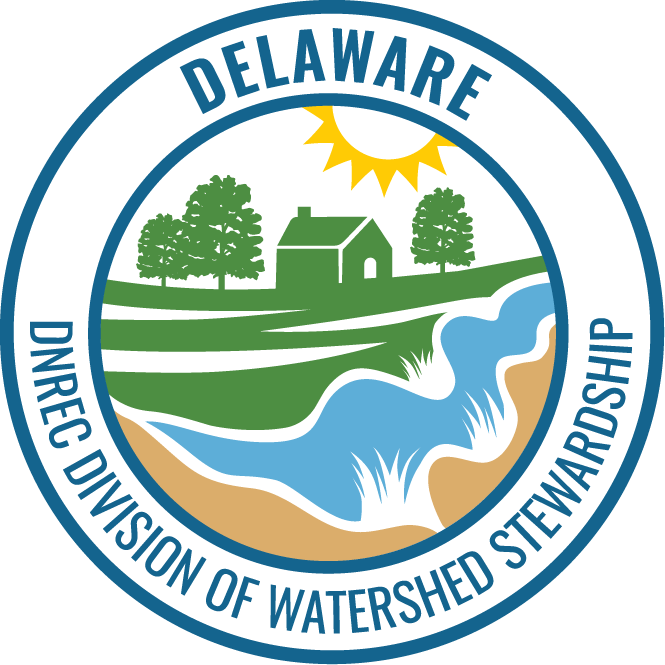
Facebook Twitter Instagram YouTube
Written on: July 22nd, 2025 in Natural Resources, Wetland Restoration
By Kristen Travers, Delaware Nature Society We’re all uncomfortably aware of how hot this summer has been. On a recent 90+ degree afternoon, while walking with a group of people, the first request was simple: “Let’s head to the stream in the shade.” As we stepped under the tree canopy along the streambank, the temperature […]
Written on: March 19th, 2025 in Wetland Research, Wetland Restoration
By Kenny Smith, DNREC’s Wetland Monitoring and Assessment In 2024 the Delaware Coastal Program and the Wetland Monitoring and Assessment Program worked together to update the Delaware Marsh Migration Model originally created in 2017. New and updated layers were added, as well as some refinement of scoring to better understand where our tidal wetlands may […]
Written on: May 20th, 2024 in Education and Outreach, Wetland Restoration
By Alison Rogerson, DNREC’s Wetland Monitoring and Assessment Program For any homeowner with a dock leading out to tidal waters in Delaware or any boat angler who likes to put in at a public ramp and go crabbing, fishing or just boating around the Inland Bays, you are familiar with the issue of rivers shoaling […]
Written on: December 14th, 2023 in Education and Outreach, Natural Resources, Wetland Restoration
By Phil Miller, DNREC’s Division of Watershed Stewardship Throughout the world, the importance of Agriculture is no secret, and here in Delaware, that’s no different. If you’ve ever taken a drive through the countryside of Kent or Sussex County, you’ll pass through miles of farms producing crops, poultry, and other agricultural products for use by […]
Written on: July 26th, 2023 in Natural Resources, Wetland Restoration
By Brigham Whitman, Delaware Wild Lands Taylors Bridge in southern New Castle County perfectly characterizes Delaware’s coastal flood plain: a mosaic of agricultural fields interspersed with patches of upland hardwood forest and the occasional residential development, surrounded by the waters of the Delaware Bay with fingers of marsh snaking throughout the adjacent low-lying areas. Aside […]
Written on: May 25th, 2022 in Wetland Assessments, Wetland Restoration
By Erin Dorset, DNREC’s Division of Fish and Wildlife The Inland Bays are a beautiful and beloved part of Delaware, containing about 20% of the state’s wetlands. Those wetlands are important economically, culturally, and ecologically, as they improve water quality, support commercial and recreational fisheries, support tourism, absorb flood waters, and provide crucial feeding and […]
Written on: December 8th, 2021 in Wetland Restoration
By Sarah Bouboulis, Partnership for the Delaware Estuary The Partnership for the Delaware Estuary (PDE) has been interested in living shorelines and shellfish research since the early 2000’s, led by Senior Science Director, Dr. Danielle Kreeger. Since 2004 PDE has installed several living shorelines throughout the Delaware Estuary, primarily using materials such as coconut coir […]
Written on: September 15th, 2021 in Wetland Assessments, Wetland Restoration
By Alison Rogerson, DNREC’s Wetland Monitoring and Assessment Program Back in July we explored the status and trends of stormwater ponds in Delaware. This time around we’re digging into how and where Delaware ‘gained’ wetlands between 2007 and 2017, according to DNREC’s recent Statewide Wetland Mapping Project (SWMP) update. How does one gain a wetland? […]
Written on: September 8th, 2021 in Living Shorelines, Wetland Restoration
By Joshua Moody, Partnership for the Delaware Estuary Since 2014, the City of Lewes, Delaware has been actively renovating the downtown waterfront park and shoreline along the Lewes-Rehoboth Canal, including native plant landscaping, playground features, walking paths, and educational signage. This work has been a part of a larger plan by the city to provide […]
Written on: May 17th, 2021 in Wetland Restoration
By Maggie Pletta, DNREC’s Coastal, Climate and Energy Delaware is known for many things… like being first, Joe Biden, and horseshoe crabs. However, there are a few less flattering things that Delaware is known for, and one is a history of polluted waterways. A large number of Delaware’s waterbodies have a fish consumption advisory, with […]